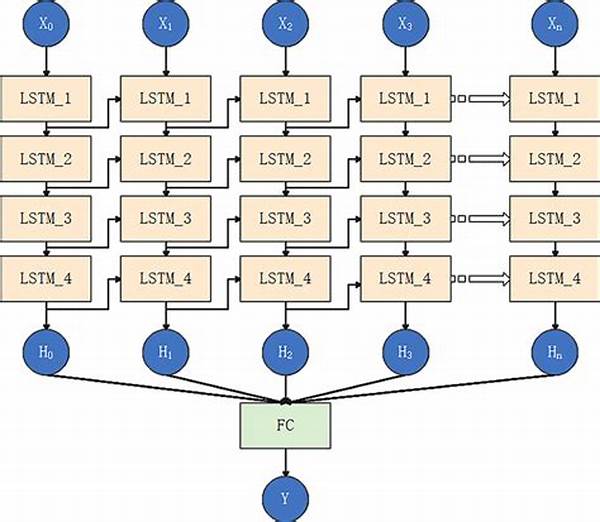Advantages of LSTM Networks
Long Short-Term Memory (LSTM) networks have quickly become a pivotal part of the machine learning landscape, particularly when it comes to processing and making predictions based on sequences of data. Imagine a world where your phone gets smarter with each message, accurately predicting what you want to say next, or a music streaming service that can anticipate your next favorite song. Enter LSTM networks, the secret sauce behind many of these innovations. Their design allows them to understand and manipulate data sequences, much like how our brains process memories and thoughts.
LSTM networks shine where traditional neural networks fall short. While traditional networks struggle to handle time-dependent data due to their inherent limitations, LSTMs excel because they are specifically designed to understand sequences and patterns across time. By maintaining a ‘memory’ of past information, LSTMs can make more informed decisions, offering solutions to problems where time dependency is crucial. In industries from healthcare to finance, the advantages of LSTM networks are being harnessed to predict patient outcomes, forecast stock prices, and even enhance customer experiences by understanding behavioral patterns.
Despite their complexity, the core advantage of LSTMs lies in their ability to remember information for long periods. This is particularly useful in languages, where understanding context is essential. For example, while a traditional network might falter trying to understand a sentence spread over several inputs, an LSTM network remembers earlier parts of the sequence, leading to more coherent and accurate interpretations. By continually learning and adapting, LSTM networks stand as testament to the power of advanced machine learning, opening doors to possibilities we once thought unreachable.
The Power of Sequence Prediction
While many neural networks exist, LSTMs are acknowledged for their prowess in handling sequential data. They provide insights where other models might be left guessing, ensuring that trends and patterns are discerned with precision. The advantages of LSTM networks extend far beyond simple computations; they allow systems to become predictive rather than reactive, a significant milestone for industries looking to innovate and optimize.
—Discussion: Delving Deeper into the Advantages of LSTM Networks
When discussing the advantages of LSTM networks, it’s essential to understand how they tackle recurrent problems in data science. At first glance, LSTMs might seem like another alphabet soup in the tech glossary, but their impact on time-series prediction and sequential data processing has been monumental.
Consider a typical day on social media platforms. Whether it’s personalized ads or suggested content, LSTM networks are at the heart of these predictive recommendations. They analyze your past behavior, predict future actions, and provide content that aligns with your preferences. This exemplifies one of the primary advantages of LSTM networks: their capacity to predict and adapt to user behavior in real-time.
Moreover, financial institutions leverage LSTM networks to foretell stock trends. Here, data over decades can be distilled into actionable insights. By understanding historical trends and adjusting to new data points, LSTMs provide traders with a bird’s eye view of potential market changes. This not only boosts trading strategies but also reduces risk, showcasing a robust application of LSTM’s predictive powers.
Understanding Memory in LSTMs
A standout feature of LSTMs is their memory cell mechanism, which equips them to store, forget, and retrieve information as needed. This helps them maintain context over extended sequences, a major leap over traditional RNNs, which often suffer from short-term memory issues. The advantages of LSTM networks become abundantly clear in tasks like natural language processing, where context is key.
LSTM Networks in Healthcare
In the medical realm, patient monitoring systems using LSTMs can predict critical events, enhancing care quality. By analyzing patient history and current vitals, LSTM systems can alert medical staff to potential risks, ensuring timely interventions. This seamless integration of AI into healthcare demonstrates the transformative power and advantages of LSTM networks in life-critical applications.
Going further, researchers are exploring LSTM applications in autonomous vehicles, where the ability to predict potential obstacles is vital. By leveraging the advantages of LSTM networks, these systems analyze data in real-time to ensure safe navigation, adapting to new scenarios in milliseconds.
Lastly, the entertainment industry, particularly in video games, utilizes LSTMs to develop NPCs (non-playable characters) that can adapt and respond naturally to player actions. This evolution from scripted reactions to dynamic interactions enhances gaming experiences, making them more immersive and lifelike.
The Future of LSTM Networks
With continuous advancements in machine learning, LSTM networks are poised to play an even more significant role. Their ability to handle not just large but complex datasets ensures they remain at the forefront of AI research and practical implementations. As industries strive for more precision and personalization, the advantages of LSTM networks shine brighter, heralding an era where machines understand time-contextual information as well as human beings do.
—Tangible Actions for Maximizing LSTM Networks
Exploring the advantages of LSTM networks paves the way for innovative developments across multiple domains. These networks simplify the complex by offering precise predictions and interpretations of data. Their ability to manage extensive time-dependent data efficiently ensures industries can transition to smarter, data-driven models with ease. As technology progresses, so too will the capabilities of LSTM networks, promising more revolutionary changes to come.

